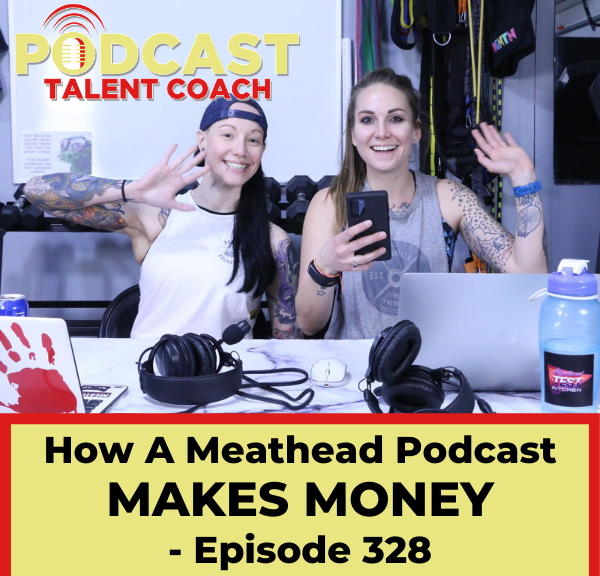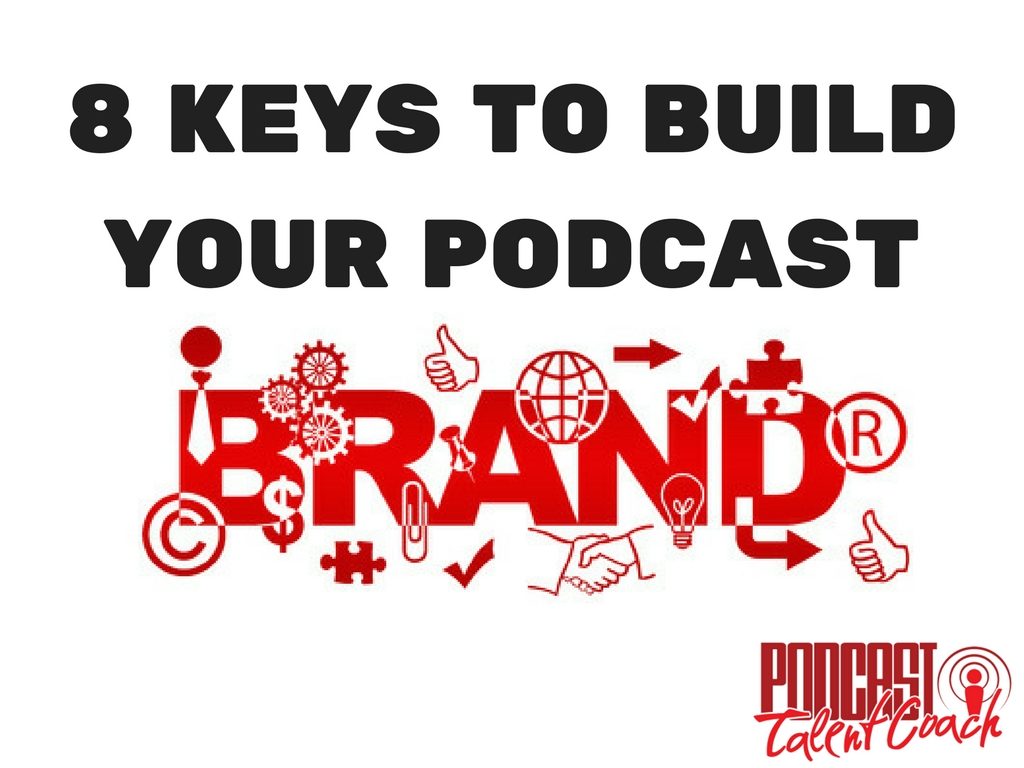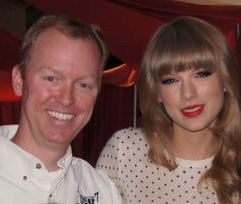Podcast: Play in new window | Download
Subscribe: RSS
Podcasters often think you need to be a business coach or teach people how to make money online in order to make money with your podcast. That isn’t the case. To make money with your podcast, you simply need a passionate, thirsty audience.
Then, you need to be willing to take some smart chances until you find what works.
Today, I want to show you a podcast that is less than a year old and well on their way to generating income with their podcast. Grab a pen and paper. You’ll definitely want to take notes.
FREE TRAINING
Before we jump into it. Let me give you a great resource to help you make money with your podcast.
If you don’t have a mentor who can take your hand and walk you every step of the way to grow your audience and make money with your podcast, please go to www.PodcastTalentCoach.com/growth and join us for a free training to see if we can help you get some clarity, build a plan and reach your goals.
Come join us as I present “6 Ways To Use Your Content To Attract Your Ideal Clients”.
On this free training you are going to discover:
- How to develop your personality to attract your ideal clients
- Why sponsorships and ads are NOT the ideal way to generate revenue
- How to grow your network with your podcast
- And more!
It happens on Saturday, March 27th at 11a ET, 8a PT. Sign up for free at www.PodcastTalentCoach.com/growth.
If you are looking for a mentor who can help you shortcut the process of making money with your podcast and avoid all of the pain of trial and error, this free training is for you. Let’s grow your community and start making money with your show.
MEATHEADS
Let me give a case study today of how this works. Sadie took my training, followed my program and launched her podcast with her cohost Sausha.
Their podcast is called Meathead Test Kitchen. The world of fitness and nutrition can be intimidating, but they are here to help make it a whole lot less scary. That’s what the podcast is all about.
They launched Meathead Test Kitchen in August. Their first episode was released on August 16th.
BE UNIQUE
The first thing you will notice about Meathead Test Kitchen is that it isn’t your middle-of-the-road podcast. These two have a definite style, swagger and personality. This isn’t your mom’s fitness and nutrition podcast.
If you want to stand out and get noticed, develop a brand and stand for something. You don’t have to be brash or in your face. You do need to pick a side and defend it. If you try to please everyone, you will please no one.
The reviews of Meathead Test Kitchen shows how they cut through. Here are some of their reviews.
“Dieting and fitness doesn’t have to be boring or tedious. Sadie and Sausha are here to prove it! Fun hosts and honest, easy to understand advice.”
“These ladies don’t beat around the bush, they are honest and easy to relate to. If swear words offend you, find another podcast.”
Pick a side and get noticed.
CONNECTION
Next, make powerful connections. If you want to grow and make money with your show, you need to connect with the right people.
Sadie and Sausha are growing their audience by connecting with the right influencers.
They are 31 episodes in. Just over six months of episodes and they have interviewed local business owners, a Titan games athlete and current Mrs. America contestant. They have interviewed a Bellator MMA fighter, CrossFit Games competitors, coaches, and a world record holding power lifter.
Sadie and Sausha use these guests to help get their show noticed. When influencers talk about your show, people take notice. Give them a reason to talk by interviewing them on your podcast.
If you want to make money with your podcast, you need to have the right people listening. These people should be your ideal clients. Interview guests who are already talking to this audience.
THIRSTY AUDIENCE
Gaining an audience isn’t enough. It needs to be the right audience.
The one thing you need to make money with your show is a thirsty audience. If you were selling water in the desert, you wouldn’t need much of a pitch to sell it at a great price. You just need a thirsty audience.
Don’t try to sell something without asking your ideal listener what they need. I know you feel like you already know. Believe me, you don’t. I thought I knew as well until I built 4 different offers that nobody wanted.
When I finally started doing market research before I built the course, people started buying before the course was even complete. Do your homework. If you want to know how to do that, let’s connect.
BE WHERE THEY ARE
Once you know who your ideal listers are, go play where they are already playing.
Sadie and Sausha recently started releasing the podcast with a full video component on their YouTube channel. They discovered their listeners were also big consumers of exercise videos.
They also have their podcast distributed through all major streaming platforms. Give your listeners plenty of options.
GIVE ‘EM WHAT THEY WANT
Now that they have built the audience, they can start offering the listeners solutions to their problems to make money with their show. They can also begin building a tribe of raving fans.
Sadie and Sausha recently started selling Meathead Test Kitchen merchandise, and have partnered with a local athleisure company to boost both brands. Again, leveraging more powerful influencers.
FIND OPTIONS
Sadie and Sausha will be releasing the first of many cookbook projects in the next few months. On their website you will find a “Shop” page with Amazon affiliate links to things their audience is already purchasing along with things the two mention on the show.
It is all about multiple streams of income selling things your listeners want to buy. They also have some other cool stuff up their sleeves for when the pandemic is over.
THE MAKE MONEY PLAN
Here is your plan. Build your brand. Stand for something. Find a thirsty audience. Figure out what they want. Build it and sell it to them. Then, build solutions to their other problems for multiple streams of income.
Everyone wins. Your listeners solve their problems. You make money with your show. Don’t overcomplicate it.
ARE YOU SERIOUS?
Are you really serious about building your audience and making money with your show? Have you been talking about it long enough and really ready to take action?
A hope and a wish isn’t going to make it happen. You need to get serious and take action. Take that first step.
If you don’t have a mentor who can take your hand and walk you every step of the way to grow your audience and make money with your podcast, please go to www.PodcastTalentCoach.com/growth and join us for a free training to see if we can help you get some clarity, build a plan and reach your goals.
Come join us as I present “6 Ways To Use Your Content To Attract Your Ideal Clients”.
On this free training you are going to discover:
- How to develop your personality to attract your ideal clients
- Why sponsorships and ads are NOT the ideal way to generate revenue
- How to grow your network with your podcast
- And more!
It happens on Saturday, March 27th at 11a ET, 8a PT. Sign up for free at www.PodcastTalentCoach.com/growth.
If you are looking for a mentor who can help you shortcut the process of making money with your podcast and avoid all of the pain of trial and error, this free training is for you. Let’s grow your community and start making money with your show.
Do you need help with your podcast? E-mail me any time at Coach@PodcastTalentCoach.com. Let’s see what we can do.
Let’s turn your information into engaging entertainment.












